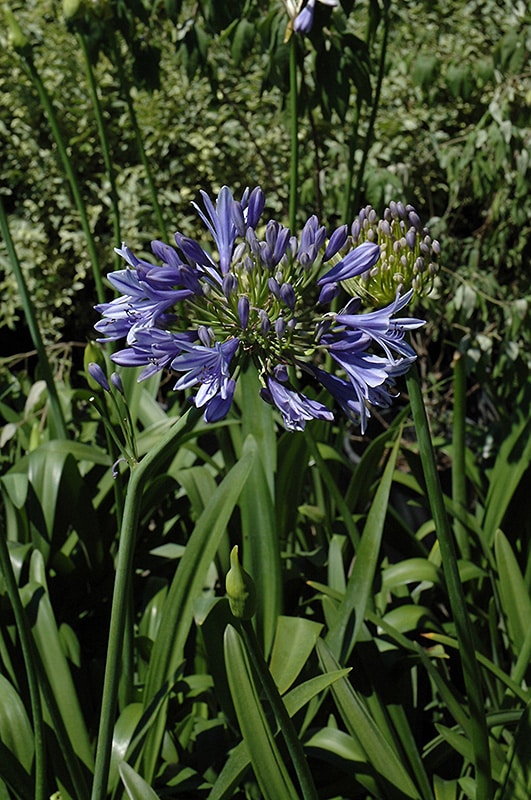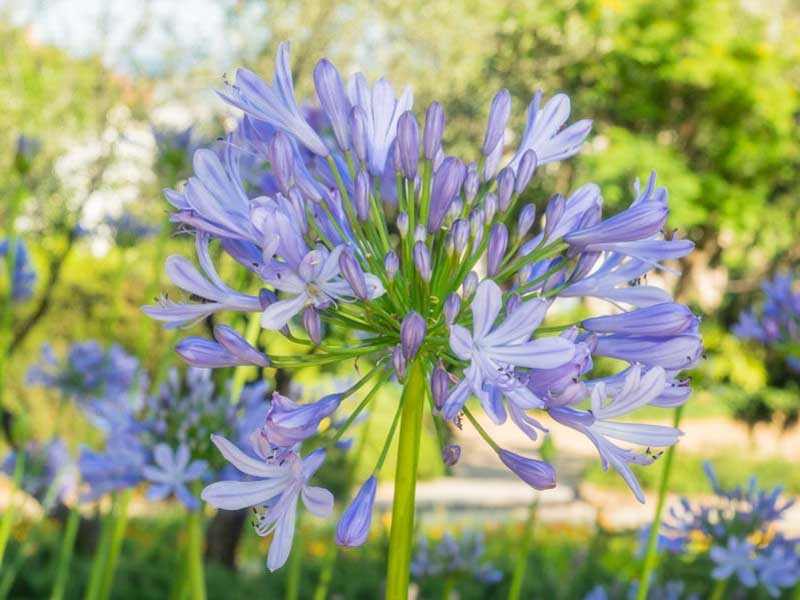Agapanthus Companion Plant Kingdoms: Perfect Pairings for Your Yard
Wiki Article
Understanding the Art of Agapanthus Care: Important Steps for Healthy Growth and Dynamic Blooms
In the realm of horticulture, the farming of agapanthus stands as a satisfying venture for those who look for to nurture these elegant blooming plants. With their striking blossoms and graceful foliage, agapanthus has recorded the interest of gardeners worldwide. Nonetheless, accomplishing ideal development and lively blooms requires a nuanced strategy that includes numerous crucial steps. From choosing the appropriate range to understanding trimming techniques, the trip towards growing flourishing agapanthus plants is complex and holds the essential to unlocking the full possibility of these herb gems.
Selecting the Right Agapanthus Range

When picking the best Agapanthus variety for your yard, take into consideration aspects such as environment viability, bloom shade, and development habit. Furthermore, consider the climate in your region to guarantee the Agapanthus range you select can grow in your particular conditions. Understanding the development practice of different Agapanthus ranges is critical for appropriate placement within your yard.
Suitable Growing Conditions
Taking into consideration the optimal environmental demands is vital for effective Agapanthus farming. Agapanthus plants are sensitive to cool temperature levels and ought to be shielded from frost during wintertime months.To make certain healthy development and dynamic blooms, plant Agapanthus bulbs at a depth of regarding 2-4 inches and space them 8-12 inches apart. Mulching around the base of the plants aids preserve moisture and reduces weed growth.
Watering and Feeding Tips
Preserving correct wetness levels and offering necessary nutrients are key elements in the treatment program for Agapanthus plants. When it comes to sprinkling Agapanthus, it is essential to strike an equilibrium. These plants choose consistently wet soil however are at risk to root rot if overwatered.Feeding Agapanthus is vital for promoting healthy and balanced development and prolific flowers. Apply a balanced fertilizer, such as a 10-10-10 formula, in the early springtime as new growth arises. By adhering to these watering and fertilizing pointers, you can ensure your Agapanthus plants grow and create vivid, resilient blooms.
Trimming Strategies for Agapanthus
Pruning Agapanthus plants at the proper times and with informative post appropriate strategies is vital for maintaining their health and wellness and advertising ideal growth and flowering. The optimal time to prune Agapanthus is in late winter months or very early spring prior to new development emerges.For flowered stems, wait up until navigate to this site the blossoms have withered and afterwards cut them back to the base. This not just cleans the plant's look however likewise motivates the development of new blossom buds. Deadheading spent blossoms can additionally redirect the plant's energy right into producing more flowers as opposed to setting seeds. However, if you intend to accumulate seeds for proliferation, leave some flowers to fully grown and completely dry on the plant.
Remember to utilize clean, sharp devices to make precise cuts and decrease the danger of introducing illness. Agapanthus. Routine trimming will certainly assist maintain your Agapanthus looking healthy and neat while guaranteeing a plentiful display of gorgeous blooms
Taking Care Of Typical Parasites and Conditions
After making sure proper pruning methods for Agapanthus, it is necessary to deal with common parasites and conditions that can influence the health and vitality of these plants. Agapanthus plants are generally sturdy however can still come down with particular problems. One usual bug that affects Agapanthus is the Agapanthus gall midget. This tiny, orange fly lays its eggs in the vegetation, resulting in altered growth and blossom buds that fall short to open up. To battle this insect, trim and destroy any affected plant components and consider making use of insecticidal soap.In addition, Agapanthus plants can endure from root rot if they are grown in inadequately draining pipes dirt. By being watchful and taking punctual activity against insects and diseases, you can help your Agapanthus plants flourish and create lively blooms. Agapanthus.

Final Thought
Finally, grasping the art of agapanthus treatment involves picking the ideal selection, offering perfect growing problems, proper watering and fertilizing, suitable pruning methods, and dealing with common pests and illness. By complying with these essential actions, you can guarantee healthy and balanced growth and vivid flowers for your agapanthus plants. Keep in mind to regularly monitor and maintain your plants to advertise their overall health and durability.To ensure healthy development and vibrant blossoms, plant Agapanthus bulbs at a deepness of concerning 2-4 inches and room them 8-12 inches apart. By adhering to these watering and feeding ideas, you can ensure your Agapanthus plants important site grow and generate vivid, durable blooms.
One typical insect that affects Agapanthus is the Agapanthus gall midge. Additionally, Agapanthus plants can suffer from root rot if they are grown in badly draining soil. By complying with these important actions, you can ensure healthy and balanced growth and vibrant flowers for your agapanthus plants.
Report this wiki page